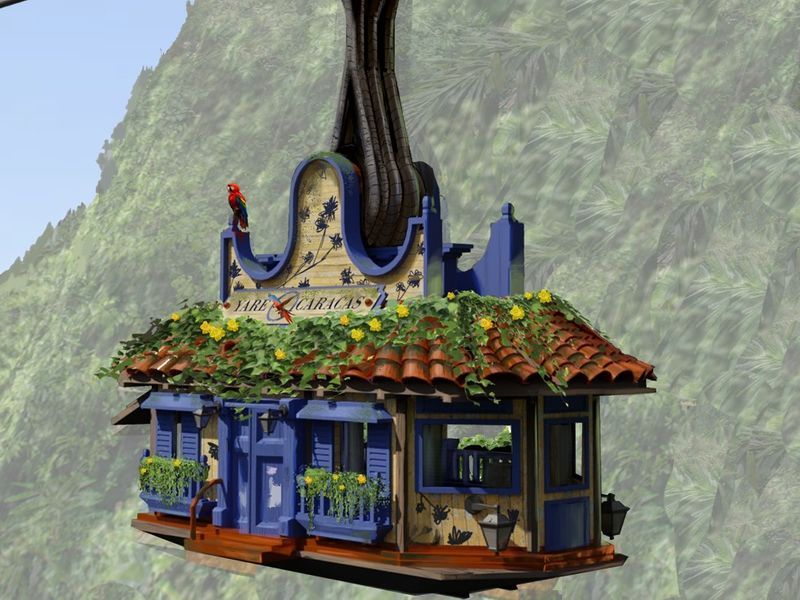
Game Environment Assets: Bringing Cultural Heritage to 3D Design
Staffordshire University graduate Ciaran Smith shares insights into creating environment assets for a game that celebrates cultural heritage.

Staffordshire University graduate Ciaran Smith shares insights into creating environment assets for a game that celebrates cultural heritage.
In this article, Ciaran, a recent graduate of Staffordshire University, offers a glimpse into a segment of her final year project. Having honed her skills in Concept Art over the past three years, Ciaran share insights from her workflow, aiming to provide guidance and inspiration to fellow artists.
Los Diablos de Yare is a concept art project consisting of environments for a hypothetical narrative driven game.
Taking place in a fictional Yare, a small town in Venezuela during the colonial era. The town is suffering under the constant pillaging of the Spanish crown and only a group of devilish bandits stand in the way to protect it.
The project aims to be a fresh look into South American culture from a fantasy perspective. It incorporates aesthetics and visuals that celebrate the culture and push a new narrative.
My process usually looks a bit like this:
I vaguley follow these steps to complete my project. You’ll notice that there’s lots of confusing arrows.
The perfect process does not exist…and that's ok!
It is never a linear process. Sometimes I’ll have to jump back or forwards in the process simply because I’m not happy with the direction of the design. I’m never particularly married to a certain design, I’m always open to change if it will read better.
The cable car is the principal method of transportation between Yare and the capital. It can transport people but is mostly used by the capital soldiers to ship Yare’s goods away without proper compensation to the villagers. It requires equal distribution of weight on both sides and is prone to sway in the wind.
I created these quick ideations after researching the mechanics of cable cars and looking at Venezuelan colonial aesthetics. The goal was to create a cart that was visually interesting but also could realistically work in a potential game. At this point I’m just focusing on the ideas rather than making anything too detailed.

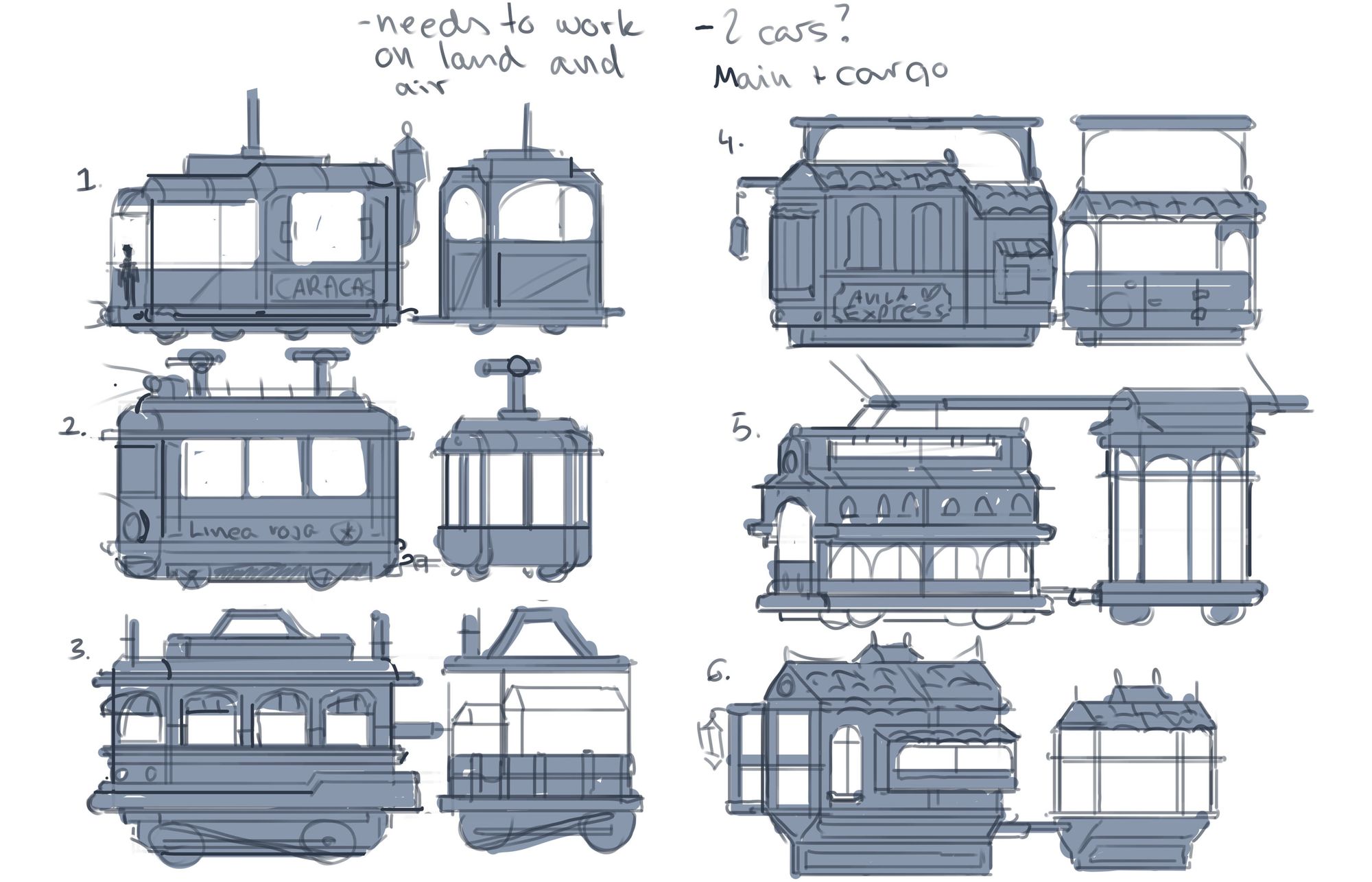
I was happy with the general ideas so I moved forward making a more defined version for my mentor.
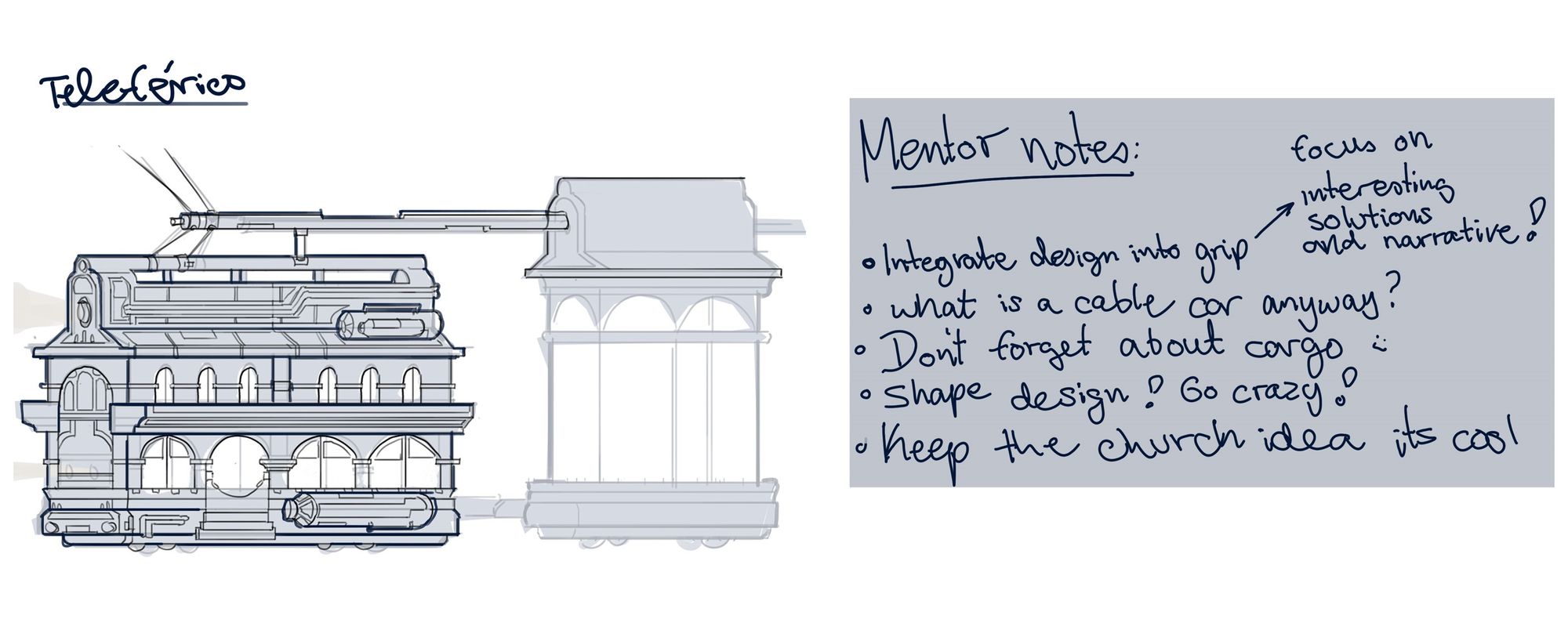
My mentor for this project acted as an Art Airector, so if he didn't like any of the designs I went back to the drawing board. This was the case for the original ideas: they told me to approach the concept of what a cable car is in a different way. This all might sound very silly but letting go of your preconceived notions of how things are supposed to look can help lead to more visually interesting looking designs.
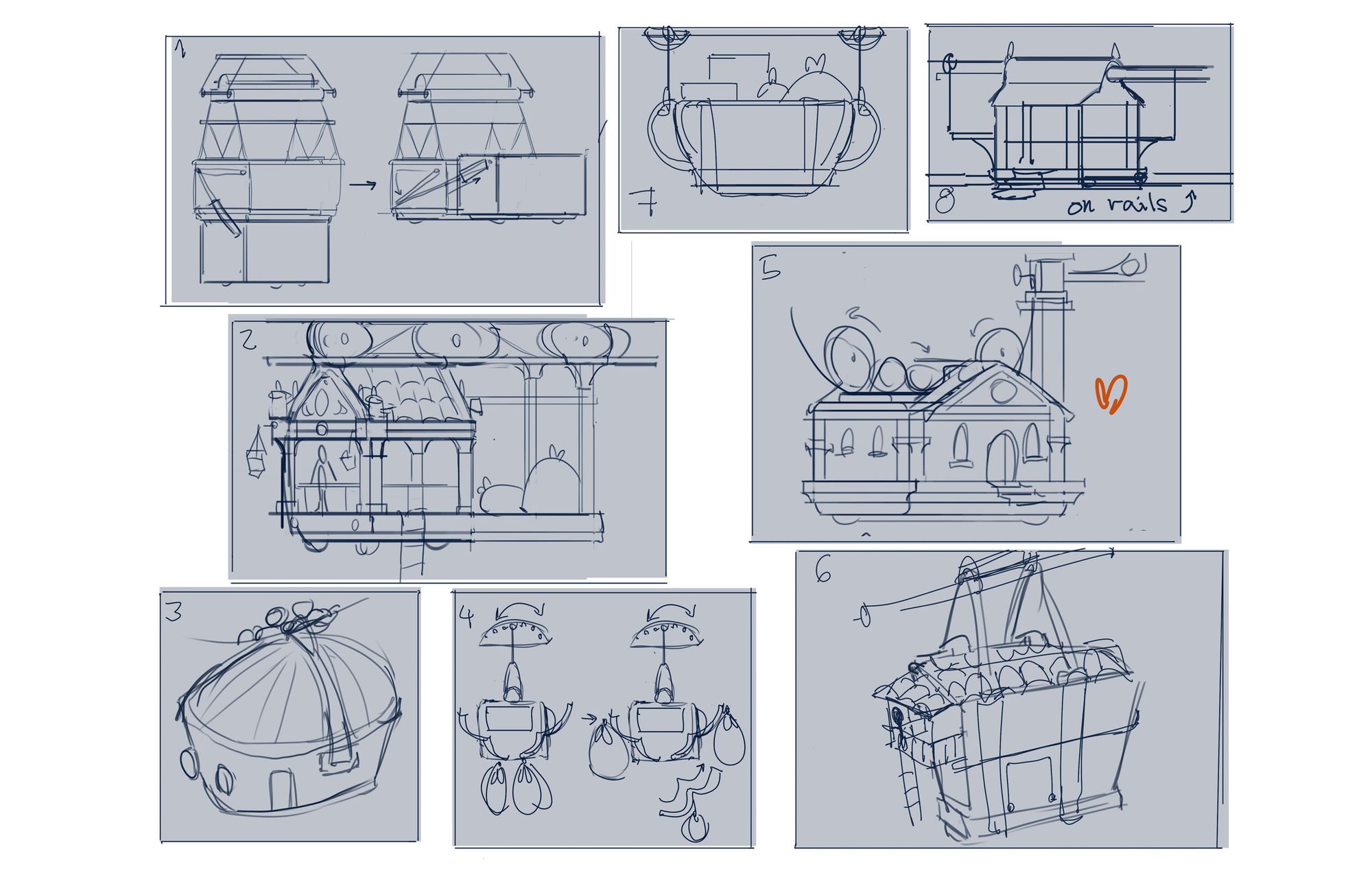
I loved the idea of having a house and an elaborate pulley system moving it about so we continued on with this concept.
These simple blockouts were made in Blender. I realised the pulley system was going to be too hard to pull off at this point, so I started looking for better ways to integrate a grip.
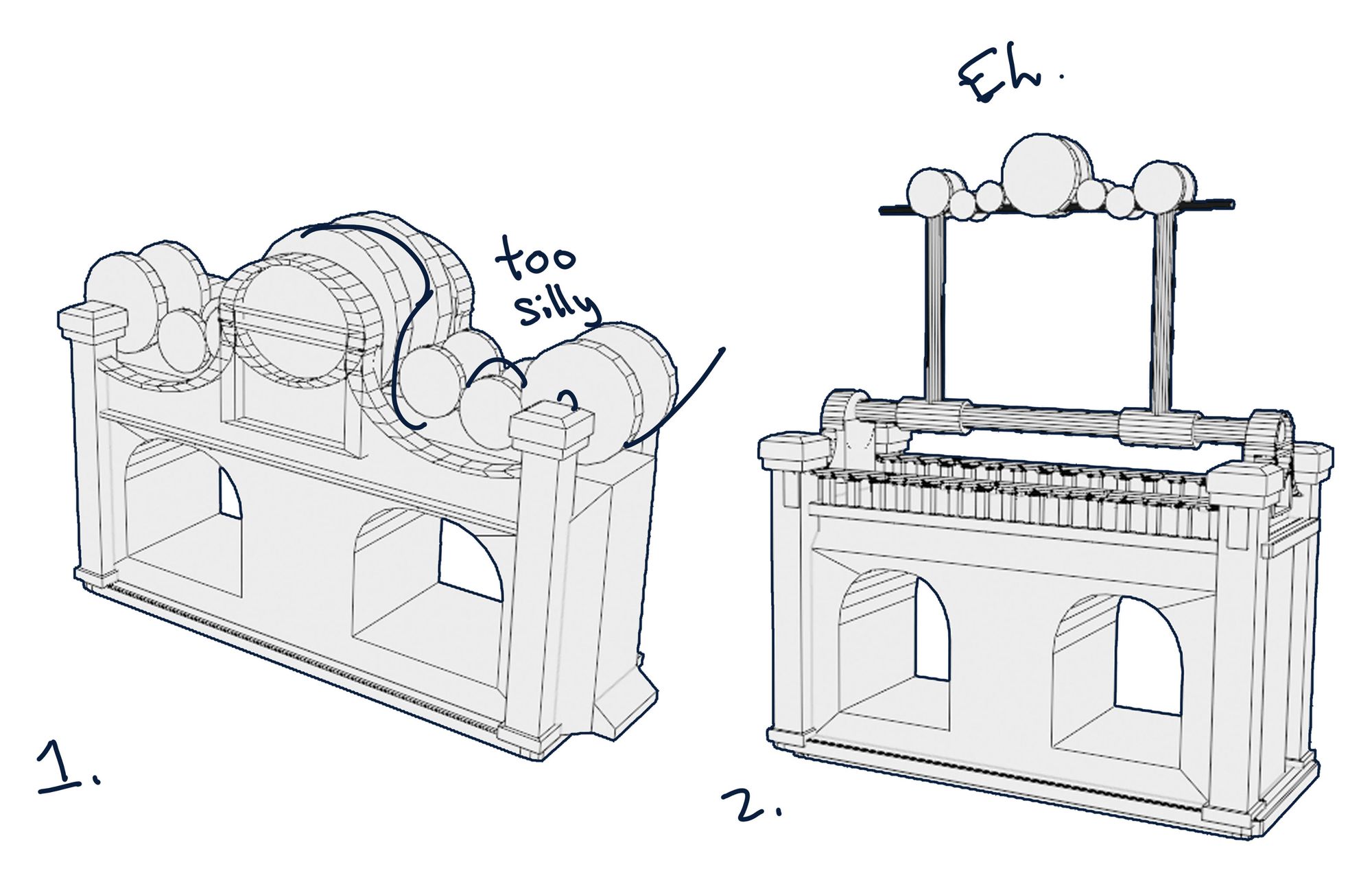
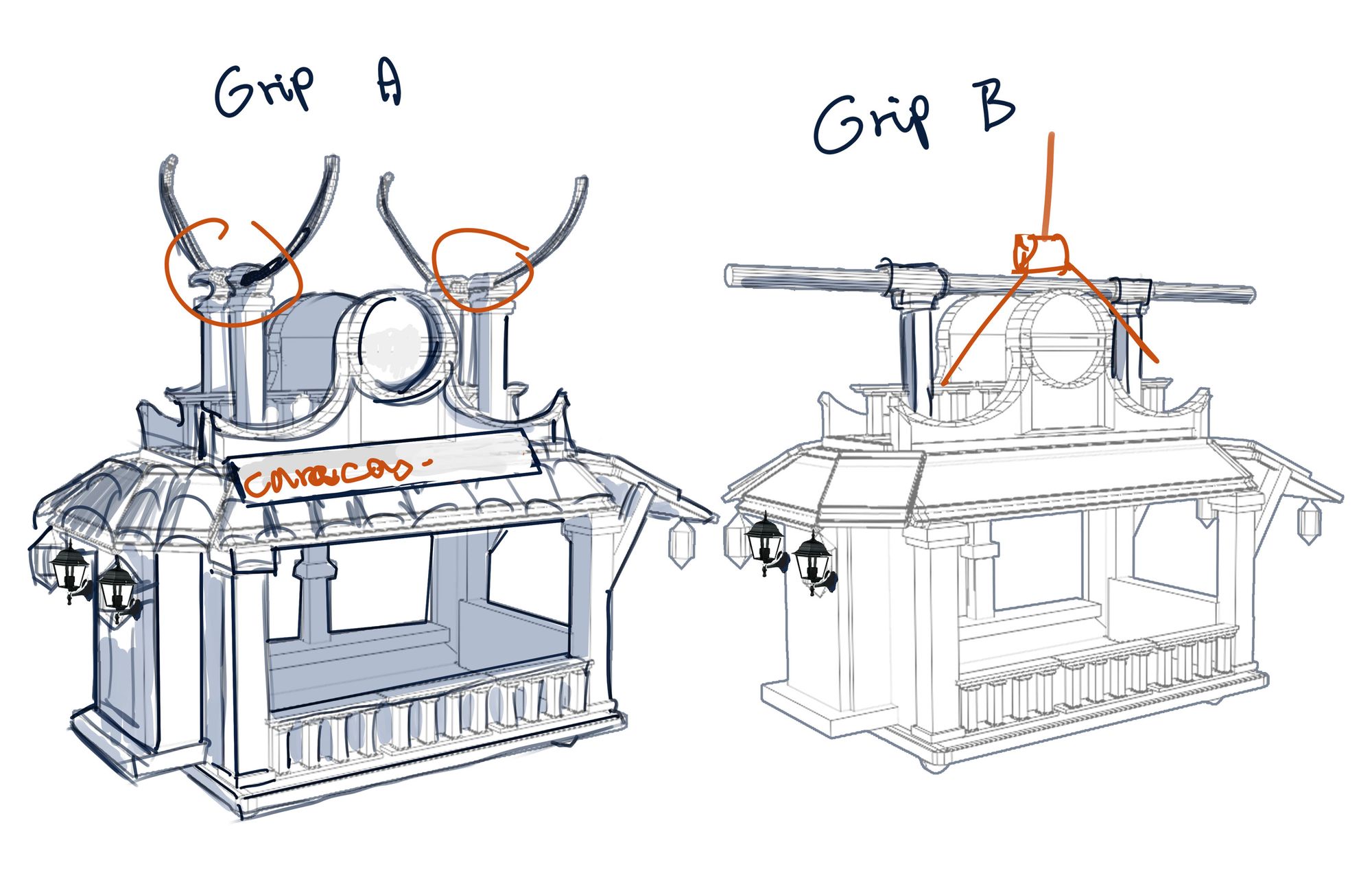
We called this the "church balcony car". We liked how it was looking, however it was losing the ‘house look’ so we pivoted away to a different solution. I don’t solely iterate in 3D, it’s always a combination of 2D and 3D. I don’t really care about making my sketches beautiful, I’m only focusing on conveying and communicating my ideas to my mentor.

From this sketch I made another proper 3D blockout.

This was the base that we jumped off from. After finding a form that we liked we needed to start making material considerations.
I struggled the most in this part of the project as I wasn’t very content with any of my proposed solutions. I made a quick paint-over to showcase what I wanted the final colours/look to be like.
There were two things that needed to be addressed: The sign and the ambiguous ‘cool pattern’.

When designing the sign I felt just simple text was too basic, adding a parrot made it more unique and relevant to the story. Parrots, or more better known, guacamayas, are very common and are often found flying among the trees near Yare and Caracas.

I wanted something culturally important for the roof patterns. The araguaney is an important cultural symbol and national tree so it was apt to base the patterns on that. The impression it should give is that the village children helped decorate and paint the cable car.

I struggled to decide on the types of materials that would realistically work for the cable car itself. Copper and wood seemed to fit the best. These materials were available at the time and could have been used for a vehicle. However, this choice brought more options in terms of colour, as copper oxidises over time and turns green. I opted for the non-oxidised version, since the cars would have been recently built within the story.

For my final render I use a mix of 3D renders, photobashing and painting to achieve that semi-realistic look. I made a final 3D model of my cable car to use for the paint-overs.

After modeling the vehicle to match the final concept I texture everything in Blender itself. At this point in the project I didn't know how the node system worked so everything was textured with a base colour, and changing the roughness of some material in the sliders. The only exception to this texturing process was the walls of the cable car - I projected an image onto the walls to speed up my process when painting.
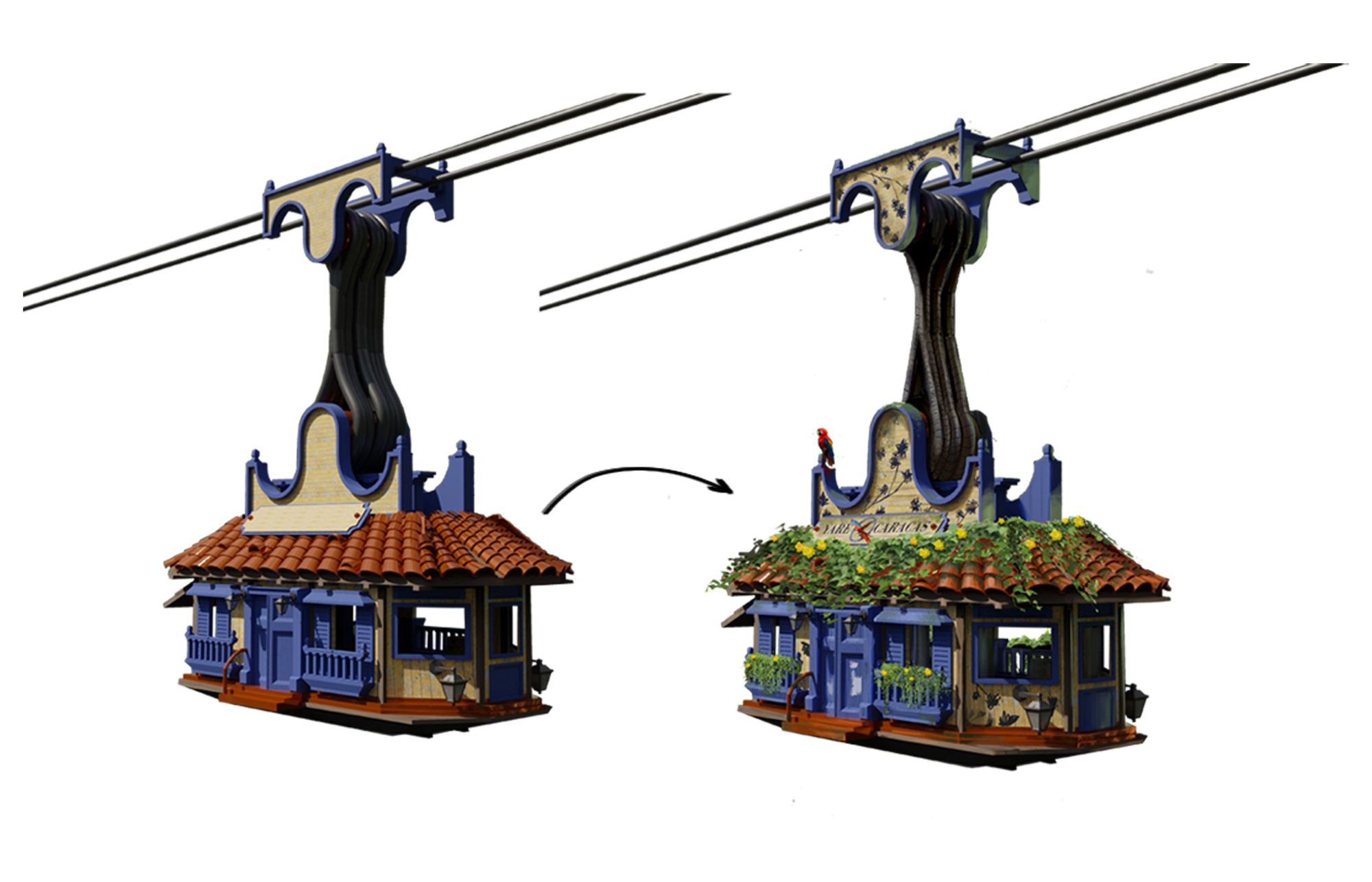
Painting is something very intuitive to me, for this particular piece I was only concerned in rendering the materials in a way that would convey the grime and constant use of the car. I tend to paint from the general to the particular, only zooming in once all the big shapes and values are placed down. I also want to break away from the 3D model look and hone into a more organic ‘painterly’ piece.
And that's all there is to it. Obviously, there are some smaller details that I left out. The entire process of creating everything took around six weeks. I learned a lot during this part of the project. At the start of it, I wasn't very proficient in Blender and only knew the basics. However, I was able to optimize my workflow by constantly switching between 3D and 2D when trying to communicate an idea. I think that’s the most important thing you can prioritize as a Concept Artist: we can create beautiful images and illustrations, but primarily, we're showcasing our fun ideas to the masses.

Check out more of Ciaran's work here.